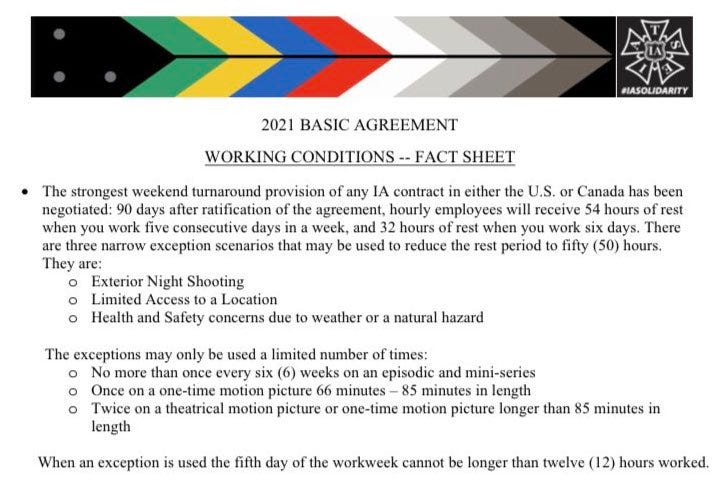The Alec Baldwin Shooting: IATSE Demands Need to Go Further
Just days after the last-minute aversion of an industry strike, this morning's breaking news proves longstanding safety concerns are in no way trivial.

This morning, we’re waking up to the news that 42-year-old director of photography Halyna Hutchins has been killed, and director Joel Souza hospitalised after a prop gun misfired on the set of a new Western, Rust.
It’s confirmed that Alec Baldwin, who is acting in and producing the film, fired the gun.


The news is fresh. Without any details of exactly what happened and how, there is nowhere to place specific responsibility (nor would it be appropriate to do so). However, for US film crew who have recently sought better working conditions across the board, and for the family and friends of Sarah Jones and Brandon Lee, for example, this will not read as a singular freak accident but yet another product of a recognisable pattern in the creative industries.
In 2014, camera assistant Sarah Jones was killed after being hit by a train on the first day of shooting for Midnight Rider. The crew was illegally set up on live tracks, something most of them were not aware of. Several of the producers, and the 1st AD, were charged with involuntary manslaughter.

The charges were appropriate; there were already industry (and common sense) rules in place that were not followed. But the truth is that health and safety rulebreaking is endemic in the industry, and only flagged when occasionally resulting in a fatality.
After Jones’ death, veteran filmmaker Haskell Wexler commented:
“The Sarah Jones tragedy brings the public’s attention to something that has been going on for a number of years,” Wexler said. “Sarah’s father has said — and I agree with him — that the only way her death will not be in vain is if we pay serious attention to safety. We are making entertainment and there’s no reason to risk our lives and our health to get a shot.”
I covered the IATSE strike proposal when it broke this month, and shared Katherine Heigl’s powerful post about its necessity (see the full version of her comments). Notably, while much of the conversation has surrounded low pay and long hours - themselves core safety concerns - the part that stuck out to me was her implying that filmmaking wasn’t ‘life and death’, while recognising that in fact, it is at times ruining lives and causing deaths:
The issue with long hours is not simply that it makes people feel tired and burnt out and disconnected from their families, as godawful as that is in its own right. It’s that people are driving home after 15 hour days, and falling asleep at the wheel.
The creative industry has a culture of ‘happy to be here’ - a deferential and often brutal power dynamic that coerces people to put themselves in situations at best economically oppressive and cruel, and at worst fatal.
While work hours and breaks were a headline part of the ‘tentative agreement’ reached this week between IATSE and AMPTP, potentially more extreme safety concerns have not been explicitly addressed:
In some ways, these concerns are broad (What processes are in place for whistleblowing?) and in others, incredibly specific to each situation (Who is responsible for ensuring prop guns are safe? Hopefully not someone who’s been working a batch of 15 hour days…)


The first three documents explaining IATSE members’ demands were released just a day before yesterday’s tragedy on the set of Rust. The union has clarified it is “a non-exhaustive set of member priorities”, that more are to come. As industry negotiations continue, safety concerns at a broader level must be prioritised, to provide for those specific instances in which movie-making really is ‘life and death’.
SUBSCRIBE 👇👇👇 for all my articles and many other perks, including a weekly newsletter that delivers the week’s international media news, campaigns, and content. Only £5 ($7) a month.
Or if you can’t subscribe, please support by sharing this newsletter with others you think might be interested. Thanks! 👇👇👇






